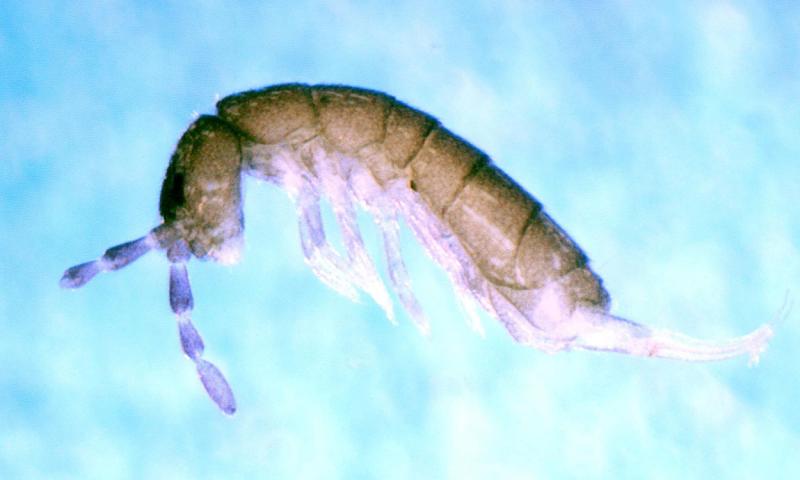
Originally Submitted: July 28, 2021
During the last few weeks, we have been receiving an increased number of questions regarding very small insects that jump very far. It didn’t take long to determine that the hordes of small insects are springtails (Figure 1). At any given time, we are surrounded by millions of them. That’s no exaggeration, as several studies have determined that there can be upwards of 10,000 springtails present in a square foot. In North America, there are approximately 700 different species that can vary in size, body structure and color. However, we don’t normally notice springtails, so why are they showing up this year?
The short answer as to why so many springtails are being observed in 2021 is the drought conditions that we are experiencing throughout much of South Dakota. Springtails typically become a nuisance or home invader during either drought conditions or saturating rains. Since we haven’t had saturating rains this year, we can point to the drought conditions.
Identification and Biology
Depending on the species, springtails can vary in size from 0.2 mm to 10 mm. Color also varies greatly based on species. The most observed species are typically 1–2 mm in size. Springtails get their names due to the presence of a tail-like appendage that is called the furcula. The furcula is a forked appendage and connects to the underside of the abdomen. When the furcula is folded underneath the abdomen, the springtails can release it to propel themselves forward.
Many springtail species are detritivores. Most of the species will require habitats with high humidity, which they normally find under leaves, mulch or thatch. However, during extremely dry or wet conditions, the springtails will leave in search of less-adverse conditions.
This can lead to them entering homes. Typically, springtails will not persist once indoors, and their populations will slowly disappear after the initial influx. Persistent populations may indicate that they are present in the soil of house plants or that there is a reliable point of entry that needs to be addressed.
Management
If springtails are observed indoors, the first step in removing them is to determine if there are easy entry points for them. Weather stripping around doors should be inspected, and any windowsills should be examined. However, because springtails are so small, they can even enter through window screens.
Reducing the humidity in homes can also reduce springtail populations, especially in basements and bathrooms. Springtails are often attracted to these rooms because of the presence of moisture and potentially mildew or mold.
As mentioned, potted house plants can become a home for springtails. If they are observed leaving the potted plant soil, water the soil and allow it to dry completely before rewatering.
For any insect, an exterior perimeter spray around the home may reduce the movement of the insects into the home. During the summer, such an application can also be beneficial to keep out crickets and many other accidental home invading insects.


